27 Tasty European Bread Soups You Need to Taste Today
European bread soups blend rustic culinary traditions with ingenious resourcefulness, transforming humble ingredients into comforting meals.
Resourceful cooks have long recognized the magic of repurposing stale bread into nourishing liquid dishes.
These hearty preparations reflect regional creativity and deep-rooted agricultural practices across different landscapes.
Peasant communities pioneered these recipes as clever solutions for minimizing food waste and maximizing nutrition.
Warm, satisfying, and incredibly versatile, bread soups represent more than just a meal - they embody cultural heritage and sustainable cooking principles.
Rich broths infused with bread crumbs create surprisingly complex flavor profiles that tantalize taste buds.
The transformative power of simple ingredients continues to inspire modern chefs and home cooks alike: Here are 27 unique European bread soups to savor:
Unique European Bread Soups for a Rustic Meal
Bread soups are a cozy staple across Europe, blending leftover loaves with vegetables and rich broths. Rustic, resourceful, and deeply satisfying, they bring comfort with every spoonful.
Porra Antequerana
Porra Antequerana is a rustic Spanish cold soup from Malaga with deep peasant roots, traditionally prepared by grinding ingredients in a mortar to create a smooth, hearty blend.
Resourceful farmers originally crafted this dish using available ingredients like stale bread, ripe tomatoes, and local ham.
Olive oil and garlic form the soup's foundational flavor profile, giving it a rich, robust taste.
Hard-boiled eggs often garnish the surface, adding protein and texture to the smooth mixture.
Salt and pepper enhance the natural flavors of fresh vegetables incorporated into the recipe.
Modern variations sometimes include tuna as a topping, expanding the soup's versatility.
Regional chefs in Antequera continue to prepare this dish, maintaining its historical significance.
Served chilled as an appetizer or tapa, porra Antequerana represents a delicious example of Spanish culinary ingenuity.
Acorda A Alentejana
Açorda Alentejana is a rustic Portuguese bread soup showcasing resourceful culinary traditions from Alentejo region's peasant kitchens.
Portuguese farmers originally crafted this economical dish using stale bread, transforming simple ingredients into a nourishing meal with minimal waste.
Garlic-infused broth soaks crusty bread slices, creating a rich base enhanced by fresh cilantro and olive oil.
Generous amounts of herbs provide intense flavor and aroma to the soup's simple composition.
Traditionally served with a poached egg on top, açorda offers hearty sustenance with regional variations including seafood and meat versions.
Cod fish represents a popular protein addition in coastal adaptations of this classic Portuguese soup.
Regional ingredients and cooking techniques define açorda's unique character, reflecting Alentejo's agricultural heritage.
Bread serves as the fundamental ingredient transforming humble components into a satisfying, flavorful dish.
Salmorejo
Salmorejo is a smooth, chilled tomato soup originating from southern Spain that transforms simple ingredients into a luxurious culinary experience.
Andalusian kitchens have perfected this cold soup's creamy texture by blending ripe tomatoes with stale bread, creating a velvety consistency that defines its character.
Spanish ham and chopped hard-boiled eggs typically crown the bright red soup, adding rich protein and visual contrast.
Summer heat makes this dish especially popular across Spain's southern regions.
Mediterranean flavors shine through its basic ingredients of fresh tomatoes, garlic, olive oil, and vinegar.
Regional variations might include slight adjustments to ingredient proportions or garnish styles.
Home cooks and restaurants alike serve salmorejo as a refreshing starter or light meal.
Spanish cuisine celebrates this simple yet sophisticated soup as a testament to traditional Mediterranean cooking techniques.
Ribollita
Ribollita is a rustic Tuscan soup born from resourceful peasant cooking that transforms simple leftovers into a hearty meal.
Originating in rural Tuscany, this traditional dish derives its name from the Italian word meaning "reboiled," reflecting its practice of reheating day-old soup for enhanced flavor.
Peasant families originally created ribollita using stale bread, cannellini beans, and seasonal winter vegetables like kale, cabbage, onions, and carrots as a way to prevent food waste.
Winter marks the perfect season for this nutritious soup, with Tuscan kale playing a starring role in its preparation.
Bread serves as the soup's thickening base, absorbing vegetable broth and creating a rich, satisfying texture.
Families have passed down unique ribollita recipes through generations, each adding personal touches to this classic comfort food.
Regional variations exist across different Tuscan towns, though the core ingredients remain consistent.
Acorda De Marisco
Acorda de marisco are a Portuguese seafood dish featuring a rich, hearty bread-based stew loaded with shellfish and robust flavors.
Generous olive oil-soaked bread forms the dish's foundation, blended with sauteed onions and fresh cilantro.
Shrimps, cockles, and clams transform the simple bread mixture into a complex maritime meal.
Eggs are vigorously mixed into the base, creating a thick and creamy texture that binds all ingredients together.
Traditional preparation involves layering the bread mash with various shellfish and topping the dish with whole shrimp and fresh cilantro.
Mediterranean ingredients shine through each spoonful, highlighting Portugal's coastal culinary traditions.
Regional cooking techniques ensure the dish remains moist and flavorful.
Warm serving temperatures enhance the seafood's natural sweetness and complexity.
Acorda
Acorda is a traditional Portuguese bread soup renowned for its rich, hearty flavor and simple peasant origins.
Portuguese regions craft this rustic dish by soaking crusty bread in a flavorful broth infused with garlic, herbs, and olive oil.
Seafood versions like acorda de marisco showcase regional ingredients from coastal areas.
Alentejo's signature acorda Alentejana features whole bread slices swimming in a robust broth.
Historically a peasant meal designed to use stale bread, acorda now appears in restaurants across Portugal.
Salt, eggs, and fresh herbs elevate the soup's complexity and depth.
Each region adds its unique twist, transforming this humble dish into a celebrated national comfort food.
The soup's ability to turn basic ingredients into a satisfying meal reflects Portuguese culinary resourcefulness.
Pappa Al Pomodoro
Pappa al pomodoro epitomizes rustic Tuscan cuisine through its simple yet profoundly flavorful bread and tomato soup that transforms humble ingredients into a deeply satisfying meal.
Originating in medieval Tuscany, this peasant dish emerged as a clever way to use stale bread and ripe summer tomatoes without wasting food.
Authentic recipes demand specific ingredients like costoluto fiorentino tomatoes and pane toscano bread for maximum flavor intensity.
Italian families traditionally prepare this soup during peak tomato season, when fresh ingredients are most abundant.
Olive oil, fresh basil, and garlic enhance the soup's rich profile and provide robust Mediterranean seasonings.
Cooking methods vary between regions, with some versions served warm and others chilled depending on local preferences.
Italian cookbook "Il Giornalino di Gian Burrasca" popularized the recipe in 1911, helping spread its popularity beyond rural kitchens.
Acorda De Bacalhau
Acorda de bacalhau is a hearty Portuguese soup blending salted cod, rustic bread, and aromatic herbs into a rich, satisfying meal.
Generous amounts of garlic and olive oil infuse deep flavor into the broth, creating a comforting dish with robust Mediterranean character.
Salt cod provides protein and traditional maritime essence to this classic Portuguese recipe.
Bread soaks up the broth, creating a thick, creamy texture that defines the soup's unique consistency.
Fresh herbs enhance the soup's complexity and brighten its overall taste profile.
Cooks often poach an egg on top, adding extra richness and visual appeal.
Sea salt and black pepper complete the seasoning, balancing the cod's intense flavor.
Hot serving temperature ensures maximum enjoyment of this traditional Portuguese comfort food.
Acorda De Camarao
Acorda de camarao is a rich Portuguese seafood soup transforming simple bread and shrimp into a luxurious culinary experience.
Portuguese coastal regions developed this hearty dish as a resourceful way to use leftover bread and fresh seafood.
Fishermen traditionally prepared this creamy soup by blending day-old bread with a flavorful shrimp broth, creating a smooth, comforting texture.
Sauteed onions and olive oil enhance the soup's depth, while beaten eggs help thicken the mixture into a creamy consistency.
Fresh cilantro provides a bright, herbal note that complements the seafood's natural sweetness.
Shelled shrimp are added as a garnish, offering visual appeal and extra protein.
Warm serving temperatures maximize the soup's rich flavors and inviting aroma.
Regional variations exist, but the core ingredients remain consistent across different Portuguese coastal communities.
Sopa De Ajo
Sopa de ajo is a rustic Spanish soup bursting with intense garlic flavor and rich culinary heritage.
Spanish home cooks transform simple ingredients like stale bread, garlic, olive oil, and smoked paprika into a comforting broth-based dish originating from rural regions.
Chicken or vegetable broth provides depth while whisked or poached eggs add protein and texture to the soup.
Traditionally consumed on Good Friday morning, this warming soup reflects Spain's resourceful cooking approach of using available ingredients.
Croutons and fresh parsley enhance the soup's visual appeal and add crisp texture.
Spanish families often serve sopa de ajo with grilled bread slices to soak up the flavorful broth.
Minimal ingredients and quick preparation make this soup a staple in Spanish households.
Each spoonful delivers a robust garlic taste that warms you from the inside out.
Minestra Di Pane
Minestra di pane represents rustic Tuscan cuisine through a hearty soup crafted from stale bread and fresh garden vegetables.
Rural Tuscany developed this economical dish as a clever way to prevent food waste and maximize ingredient potential.
Peasant families traditionally combined day-old bread with seasonal produce like beans and black cabbage.
Simple ingredients transformed humble components into a nourishing meal that sustained hardworking families.
Basic kitchen staples including water, olive oil, and salt formed the soup's foundational flavor profile.
Tomatoes and onions frequently enhanced the broth's depth and complexity.
Regional variations emerged based on available seasonal vegetables.
Black cabbage and cannellini beans remained consistent signature elements across different preparation methods.
Estonian Bread Soup (Leivasupp)
Leivasupp is an Estonian bread soup that transforms stale rye bread into a luxurious dessert blending sweet and tangy flavors.
Traditional home cooks create this creamy dish by soaking dense dark bread and mixing it with raisins, fruit juice, and warm spices like cinnamon.
Sugar adds natural sweetness while milk or cream provides rich texture to the smooth mixture.
Seasonal fresh fruits and chopped nuts enhance the soup's complexity and nutritional value.
Estonian families often serve leivasupp as a comforting winter dessert or light afternoon treat.
Rye bread serves as the soup's primary ingredient, giving it a distinctive earthy undertone.
Preparation involves carefully mashing bread and combining ingredients to achieve a soft, pudding-like consistency.
This resourceful recipe demonstrates Baltic culinary ingenuity by repurposing leftover bread into a delightful sweet course.
Wodzionka
Wodzionka is a robust Silesian bread soup transforming stale sourdough into a nourishing meal through a simple yet ingenious preparation method.
Dense, days-old bread serves as the soup's foundation, soaked carefully in water or broth to create a hearty base.
Melted pork fat brings rich flavor and depth to the mixture, complemented by aromatic garlic and traditional spices like bay leaves.
Salt and pepper enhance the soup's overall taste profile, creating a warming dish that wastes nothing and celebrates resourceful cooking.
Silesian home kitchens have long prepared this economical soup as a way to use leftover bread and provide a filling meal.
Regional traditions highlight the soup's connection to frugal agricultural lifestyles.
Working families relied on wodzionka as a nutritious and satisfying option during challenging times.
Rural communities considered this soup a practical solution for utilizing every available ingredient.
Brotsuppe
Brotsuppe represents a resourceful German soup transforming stale bread into a comforting meal with deep flavor profiles.
German home cooks craft this traditional dish by frying rye bread pieces with onions in butter until golden and crispy.
Meat or vegetable broth serves as the soup's foundation, creating a rich base for the toasted bread components.
Regional variations from Franconia enhance the recipe with optional ingredients like meat, egg yolks, or cream for added substance.
Aromatic spices such as marjoram, caraway, and nutmeg provide complex layers of taste to the simple preparation.
Salt and pepper balance the soup's robust characteristics, ensuring a satisfying experience.
Brotsuppe emerged as a practical solution for using leftover bread in German households.
Home kitchens continue this waste-reducing tradition by transforming basic ingredients into a warming, nourishing meal.
Czech Bread Soup (Chlebova Polevka)
Ribollita is a rustic Tuscan bread soup celebrating resourceful Italian cooking with its ingenious use of leftover ingredients.
Peasant families originally crafted this hearty soup by transforming stale bread and seasonal vegetables into a nourishing meal.
Traditional preparation involves slowly simmering bread chunks with cannellini beans, cavolo nero (black kale), tomatoes, and onions in a rich vegetable broth.
Stale bread serves as the soup's essential base, absorbing flavors and creating a thick, satisfying texture.
Some variations include adding extra vegetables like carrots, celery, and potatoes for more depth.
Olive oil and herbs like rosemary enhance the soup's robust flavor profile.
Regional interpretations across Tuscany might include small variations in ingredients and cooking techniques.
Families often enjoy ribollita as a warming winter dish that stretches affordable ingredients into a complete, nutritious meal.
Bayerische Brezensuppe
Bayerische brezensuppe celebrates Bavaria's bread culture through a hearty pretzel-based soup transforming stale pretzels into a comforting meal.
German bakers crush traditional twisted pretzels into a rich broth, creating a creamy texture that highlights regional culinary creativity.
Bavaria's soup originated as a resourceful way to prevent food waste by repurposing day-old pretzels.
Munich restaurants and home kitchens frequently serve this warm soup during cold winter months.
Salt-crusted pretzels add complex flavor and thickening properties to the broth.
Beer sometimes enhances the soup's depth and traditional character.
Simple ingredients like onions, butter, and herbs complete this rustic dish.
Germans consider brezensuppe a classic example of economic cooking that wastes nothing.
Pane Cotto
Pane cotto is a rustic Italian soup rooted in peasant cuisine, transforming stale bread into a resourceful, nourishing meal across multiple regions.
Originating as a basic dish of bread cooked in water with garlic, it has evolved to incorporate seasonal vegetables like zucchini, carrots, and onions.
Regional variations include fresh herbs, beans, chili peppers, and grated cheese.
Veneto embraces this soup with particular enthusiasm, celebrating its humble origins and adaptable nature.
Water or stock serves as the liquid base, helping soften and flavor the bread.
Ingredients are layered carefully to maximize taste and texture.
Traditionally prepared by home cooks using available pantry staples, pane cotto demonstrates how simple ingredients can create a satisfying, warming meal.
Each spoonful connects modern diners to generations of Italian culinary resourcefulness.
Sopes Mallorquines
Sopes mallorquines are traditional Mallorcan appetizers combining seasonal vegetables and softened black bread soaked in rich broth.
Mediterranean farmers originally crafted this rustic dish using fresh garden produce and simple ingredients available during harvest seasons.
Cooks prepare vegetables like green beans, spinach, chard, or cabbage by lightly frying them in a classic pottery terrine called a greixonera.
Thin black bread slices absorb flavorful vegetable broth during gentle simmering, creating a comforting texture and robust taste.
Ingredients vary based on seasonal availability, reflecting Mallorca's agricultural heritage.
Regional kitchens often serve sopes mallorquines as a light starter or side dish.
Winter versions tend to include heartier vegetables and more substantial bread preparations.
Each bite connects you to generations of Mallorcan culinary traditions.
Soupe Crasse
Soupe crasse is a rustic northern Italian bread soup that transforms stale breadsticks into a rich, comforting meal through layering and slow cooking.
Alternating layers of breadsticks and Taleggio cheese create its signature texture and depth of flavor.
Chicken stock bathes the bread and cheese, simmering gently for about 30 minutes to soften and meld ingredients.
Butter plays a crucial role, first sautéing onions and then being strained to drizzle over the finished dish.
Onions are discarded after infusing the butter with their subtle sweetness.
Salt and pepper season the soup, enhancing its simple yet profound taste.
Traditional preparation methods ensure each spoonful offers a warm, satisfying experience.
Home cooks in northern Italy have perfected this economical dish that transforms leftover bread into a nourishing meal.
Abajao
Abajao soup emerges as a rustic Andalusian delicacy from Arcos de la Frontera, showcasing regional ingredients in a hearty culinary experience.
Spanish villagers traditionally prepare this thick soup using day-old bread as its foundational element.
Olive oil provides a rich base for sautéing garlic and onions until they become translucent and fragrant.
Chopped tomatoes, bell peppers, and asparagus join the mix, creating a vibrant vegetable medley.
Ingredients are slowly simmered to meld their distinct flavors and textures.
Bread chunks absorb the vegetable broth, thickening the soup and adding substantial body.
Salt and pepper season the dish, enhancing its natural vegetable profile.
Families often serve abajao as a warming lunch or light dinner during cooler months.
Acquacotta
Acquacotta is a rustic Tuscan soup born from resourceful medieval shepherds and cattle breeders who transformed simple water and minimal ingredients into a nourishing meal.
Originating in Maremma's coastal regions, this hearty dish emerged from peasant kitchens where survival demanded creative cooking with limited resources.
Medieval butteri (cattle breeders) and forest charcoal workers frequently prepared acquacotta using water, stale bread, onions, and whatever vegetables were at hand.
Tomatoes, olive oil, and random leftovers became essential components of this economical one-pot wonder.
Salt and sometimes eggs enhanced the soup's protein content and flavor profile.
Regional variations developed based on available seasonal ingredients.
Maremmani farmers perfected the technique of creating substantial meals from seemingly scarce provisions.
Sopeao
Sopeao stands as a refreshing Andalusian cold soup bursting with Mediterranean flavors from Sevilla's culinary traditions.
Summer kitchens transform stale bread, ripe tomatoes, onions, garlic, and bell peppers into a silky liquid meal.
Olive oil and vinegar blend ingredients into a smooth base that captures regional taste profiles.
Generous additions of hard-boiled eggs and tuna elevate the soup's protein content and textural complexity.
Traditional preparation involves mixing raw vegetables with bread and creating a creamy consistency through careful blending.
Its name derives from the Spanish verb "sopear," meaning to soak bread in liquid.
Families and friends enjoy sopeao as a cooling dish during hot summer days.
Restaurant tables throughout southern Spain welcome this simple yet satisfying soup as a classic regional specialty.
Shepherd’S Bread Soup (Pane Del Pastore)
Pane del pastore represents a rustic Basilicata bread soup that transforms simple ingredients into a comforting meal.
Stale bread becomes the core foundation of this classic dish, simmered in a flavorful broth with aromatic herbs.
Tomatoes add depth and richness to the soup's base, creating a vibrant red color.
Bay leaves and oregano infuse the liquid with traditional Mediterranean flavors.
Eggs are typically cracked directly into the warm mixture, adding protein and creamy texture.
Olive oil drizzled on top enhances the soup's overall taste and provides a silky finish.
Salt balances the ingredients, ensuring a well-seasoned experience.
Regional home cooks have prepared this soup for generations as a resourceful way to use leftover bread.
Zuppa Alla Canavese
Zuppa alla Canavese is a hearty winter soup from Piemonte, Italy, featuring layers of bread and cabbage that melt together in a rich, comforting blend.
Bakers slice bread carefully and arrange it at the bottom of a baking dish with melted butter.
Cabbage leaves are cut into large pieces and layered over the bread with generous sprinklings of Parmigiano-Reggiano or Fontina cheese.
Salt and black pepper enhance the soup's depth and complexity.
Meat stock adds rich flavor to the base, creating a traditional recipe passed down through generations.
Home cooks prepare this dish as a quick and satisfying meal during cold winter months.
Each spoonful offers a rustic taste of northern Italian countryside cooking.
Rumfordsche Suppe
Rumfordsche suppe represents a historical Bavarian soup designed as an economical meal for impoverished populations and prisoners in Munich.
Sir Benjamin Thompson created this nutritious soup around 1800 with simple, affordable ingredients like pearl barley, dried peas, potatoes, beer, and salt.
German culinary traditions preserved this recipe as a testament to resourceful cooking during challenging economic times.
Slow simmering transforms the basic ingredients into a thick, hearty broth that gains depth through extended cooking.
Bread serves as a final addition before serving the soup, enhancing its texture and substance.
Modern food historians occasionally encounter this soup during historical Oktoberfest recreations.
Beer contributes a distinct flavor profile to the soup's overall composition.
Despite its modest reputation, Rumfordsche suppe demonstrates how basic ingredients can create a filling and nutritious meal.
Zurrukutuna
Zurrukutuna stands as a rustic Basque bread soup renowned for its robust flavors and simple peasant origins.
Spanish fishermen traditionally prepared this hearty dish using stale bread, salt cod, onions, and paprika as core ingredients.
Salt cod provides a distinctive marine saltiness that defines the soup's character.
Olive oil enriches the broth with deep Mediterranean undertones.
Garlic and pimenton add complex layers of warmth and depth to each spoonful.
Water helps meld the ingredients into a thick, chunky consistency.
Bread added near cooking's end absorbs the savory liquid without becoming mushy.
Served warm in substantial bowls, zurrukutuna offers a comforting glimpse into Basque culinary traditions.
Sopa De Gato
Sopa de gato is a rustic Spanish soup from Cadiz that transforms simple ingredients into a warming winter comfort dish.
Stale bread serves as the soup's hearty base, absorbing a rich garlic-infused broth that creates intense flavor depth.
Spanish home cooks traditionally fry garlic cloves in abundant oil before adding water and salt to create the liquid component.
Hot broth gets poured over bread slices, which then bake in an oven until achieving a golden-brown color.
Kitchen resourcefulness defines this soup, using minimal ingredients to craft a satisfying meal.
Salt adds essential seasoning while enhancing the bread's texture and taste.
Winter meals benefit from this quick, economical preparation method passed through generations.
Families gather around steaming bowls of this humble yet delicious soup.
What Types of Bread Work Best in Traditional Bread Soups?
Traditional bread soups rely on the texture and flavor of the bread to create a hearty, comforting dish. The best types of bread for these soups typically have the following qualities:
Using these bread types ensures your soup has the perfect balance of softness and bite.

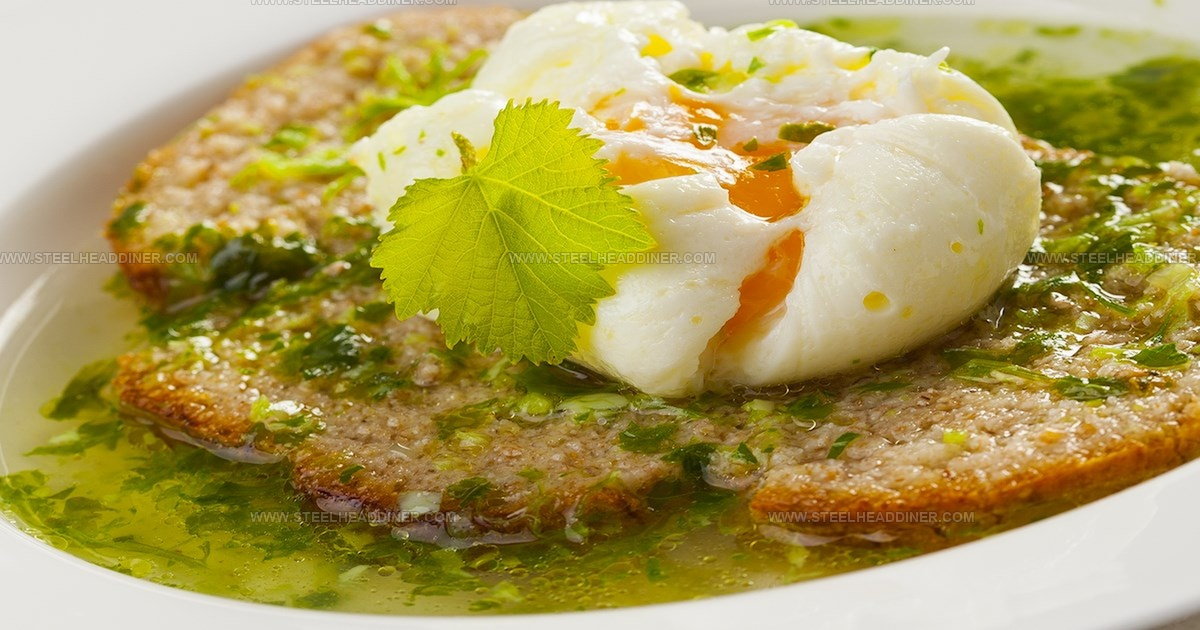

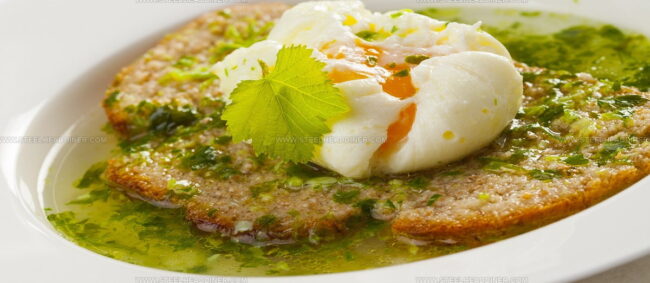
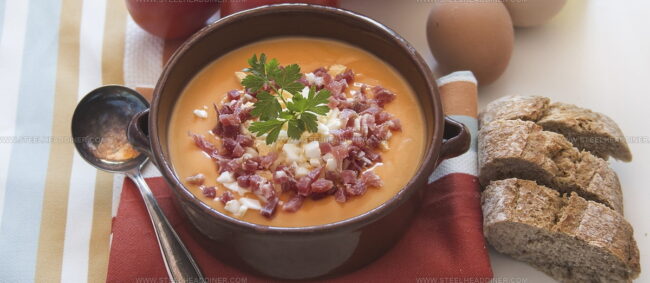
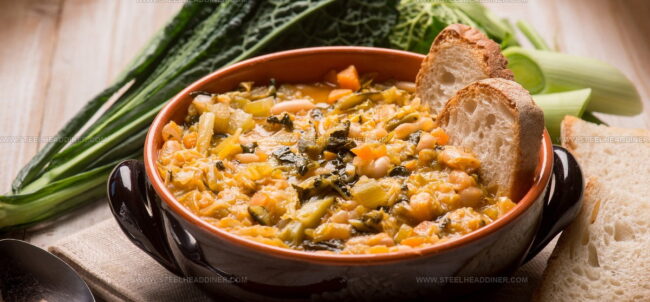
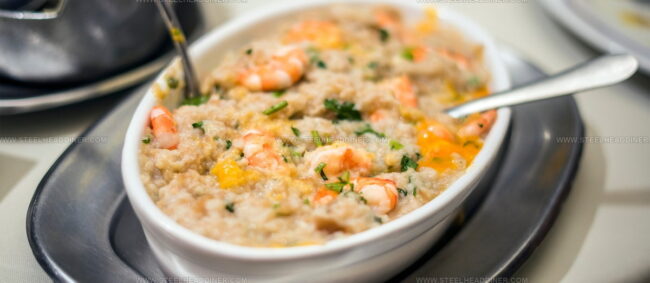
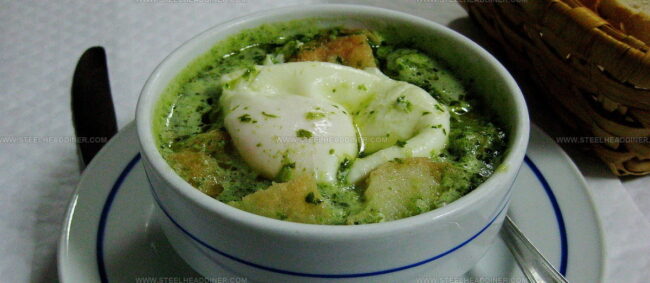
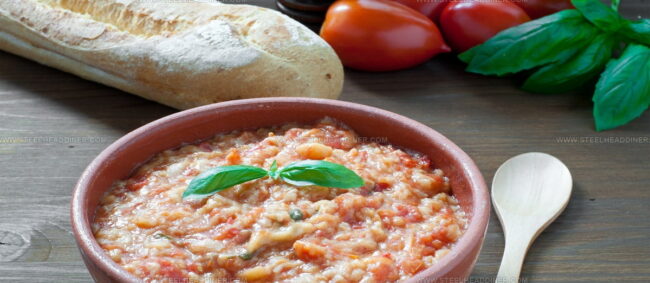
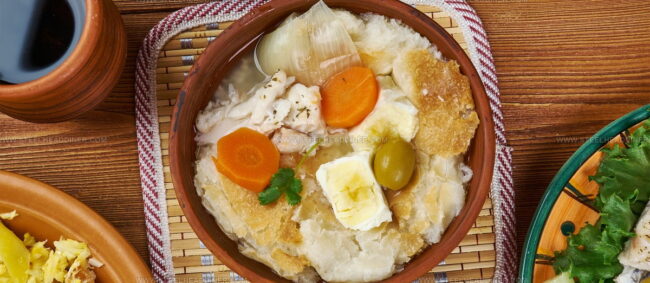
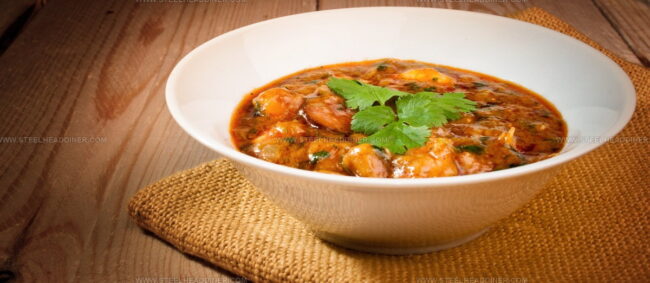
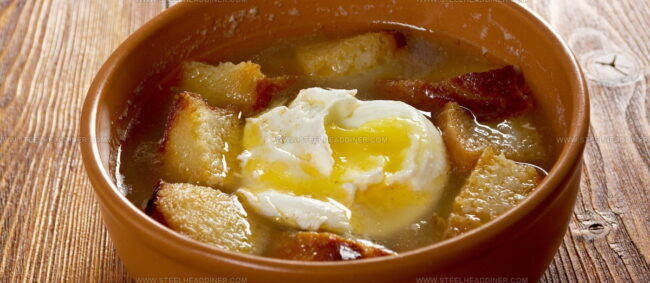
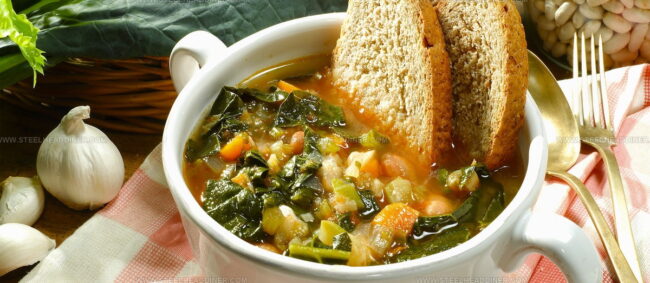
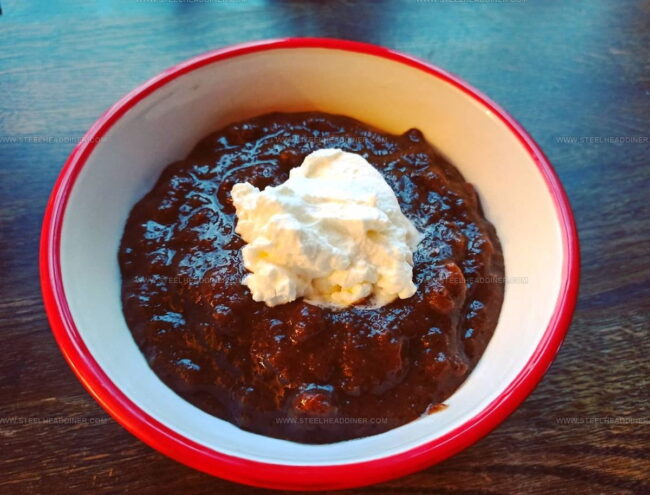
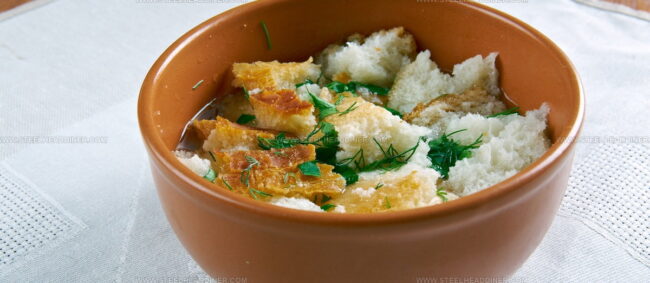
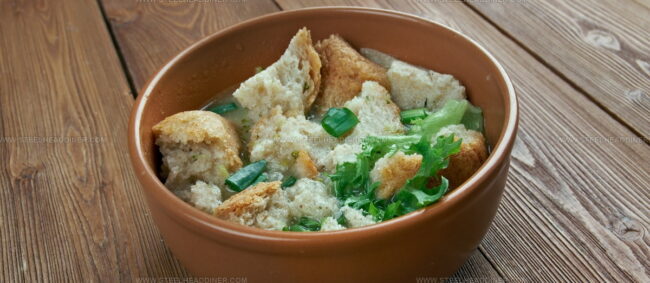
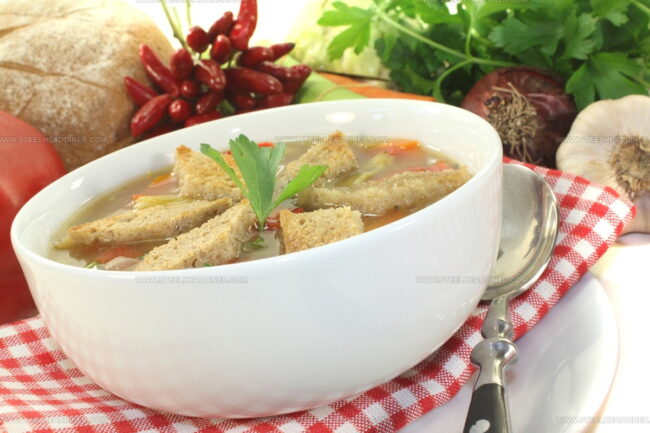
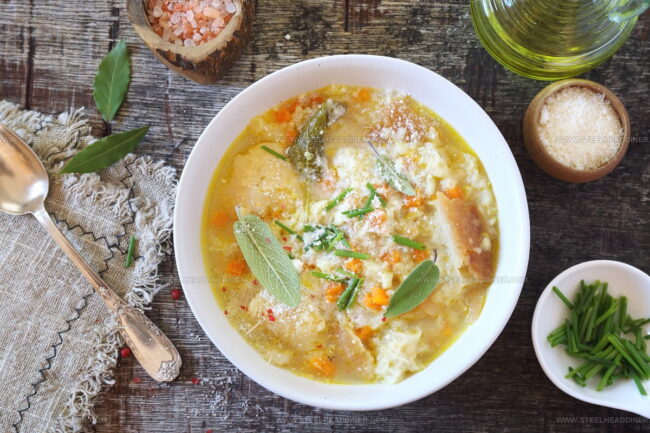
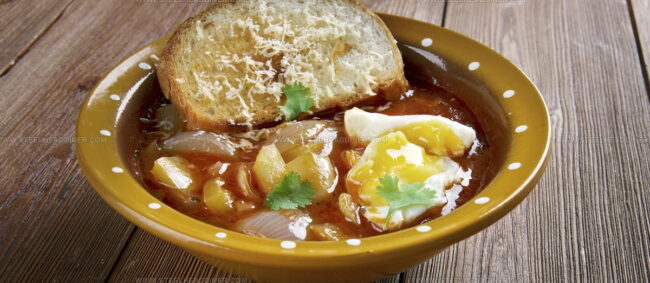
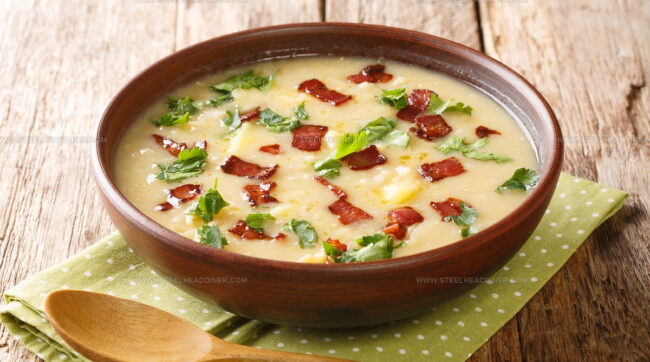
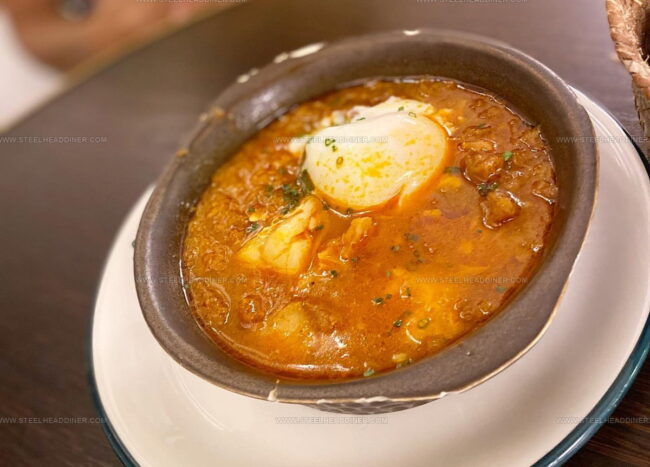
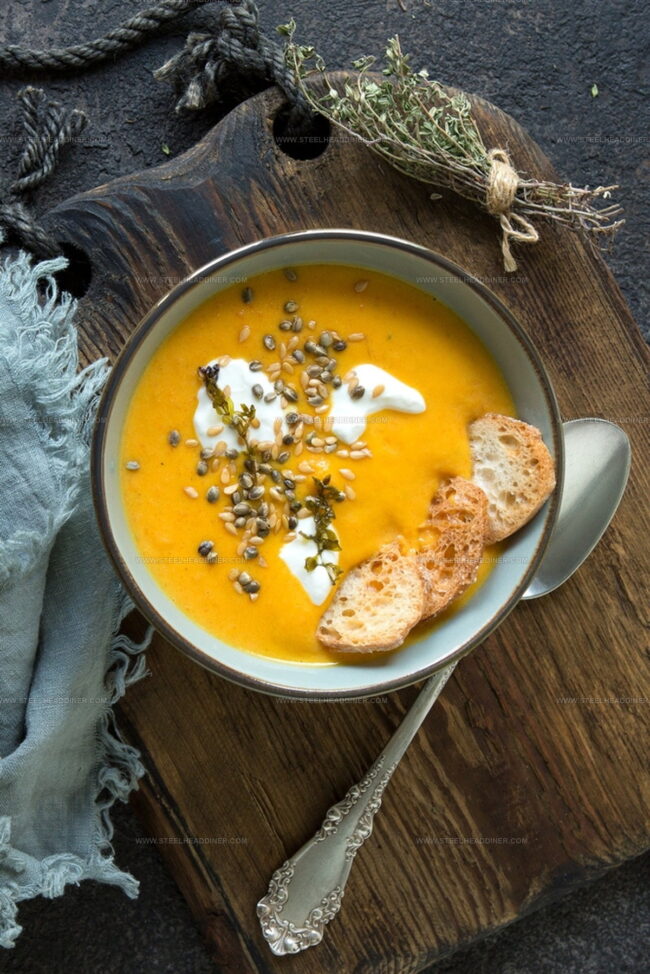
Jack Monroe
Founder & Recipe Innovator
Expertise
Pacific Northwest cuisine, Single-serving recipe development, Sustainable sourcing and cooking, Modern comfort food
Education
Brightwater
Associate of Applied Science in Culinary Arts
Focus: Sustainable cooking, seasonal ingredients, and food systems education
Jack grew up with a fishing rod in one hand and a cast-iron skillet in the other. After graduating from Brightwater: A Center for the Study of Food, he set out to prove that cooking for one could still taste like a feast.
Jack believes that food should feel real: fresh, fearless, and a little wild, just like the rivers he grew up around. For Jack, every single dish is a small adventure, and the best ones are the ones you can cook with heart, not hassle.